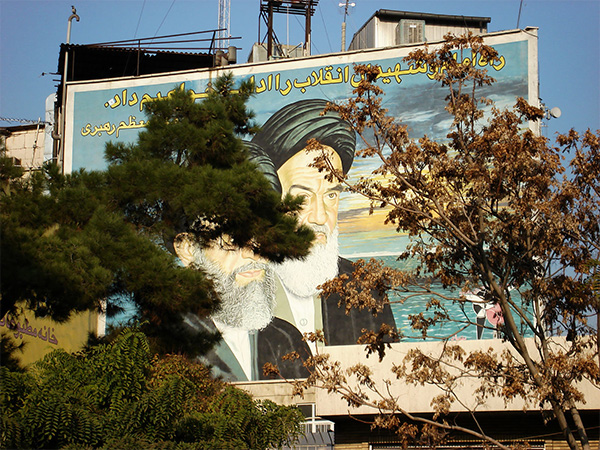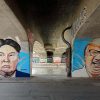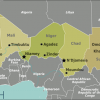Original version in Spanish: ¿Qué hacer con Irán?
Theme
The relationship of Western countries with Iran is difficult because it is a country with two faces: a reformist face, more familiar and accommodating; and another conservative face, very distant and tough.
Summary
Like many Arab and Western countries, Iran is undergoing a process of ‘dualisation’. On the one hand, many people in Iranian society (and within its government) are cosmopolitan, globalised, well-educated, urbane, secular, liberal, self-sufficient and capable of wielding soft power with Western neighbours. On the other hand, however, much of Iran is isolationist, radical, rural, underprivileged and fanaticised. That side of Iran represents the darker side of the Revolution (and its hard power) and makes it difficult for the West to deal closely with Iran. This duality translates into a division of labour with, on one side, the government, diplomatic corps and the military, in charge of domestic reforms and formal relations with other countries, and, on the other, the Supreme Leader, the Revolutionary Guards and the militias, who wield responsibility for maintaining Iranian influence within the region.
Analysis
The portrait of Iran as divided into two groups –reformists and conservatives– is a simplification of reality that serves only to begin to understand the country. But this picture does not faithfully reflect reality. Although reformists and conservatives are very different in their visions and expectations, they are united by a common history. They share the same national pride. They cooperate and support each other in the face of external pressures. Their leaders have been socialised within the revolutionary regime. However, the dualist description of Iran does help to understand the above-mentioned division of labour between the two sectors who serve as Iran’s interlocutors with Western governments and Foreign Ministries: one group –amiable and accessible– is capable of maintaining relatively close economic, diplomatic and cultural relations with the West, but the other group –intransigent and fanatical– is bent on exporting the revolution and instability across the Middle East. The two faces of Iranian society are so obvious to Western observers that it becomes even more difficult to gauge the relative influence of either, and, above all, to avoided being seduced by the face which coincides the most with our own loyalties and fears. The lack of reliable data on social and political trends, and only limited knowledge of the revolutionary regime, impede any attempt to objectively calibrate the appropriate mode of relating to either sector (each with their defenders and critics), or with Iranian citizens and civil society in general. Therefore, the attempt of Western governments to get closer to Iran is as complicated as it is necessary.
The internal dynamic: progress and setbacks
The recent demonstrations in Iran make the country’s internal differences clear. While conservatives take advantage of popular anger in the face of inflation or shortages to criticise the Rouhani government, the reformists focus their critique on the religious authorities, including the Supreme Leader, Ali Khamenei and the Revolutionary Guards. The demonstrations ended up incorporating protesters against everything and everyone. The Western interpretation of these demonstrations has varied according to the sympathy or the aversion felt toward one or the other of these two Iranian factions. While the US has tended to see a new version of the 2009 ‘green spring’ movement against the regime, in Europe analysts perceive a pattern like that of other Arab and European uprisings which have been driven by lack of prospects, inequality and social disaffection with their governments. Beyond such subjective interpretations, however, the demonstrations have revealed the existence of serious social ills which, while still incapable of putting the system at risk, are nevertheless spreading in the small cities and across the rural areas that had previously remained on the margins of social demonstrations. These demonstrations have also made clear that they will be used in the future to radicalise the competition between conservatives and reformists.
The current social malaise can be attributed to the gap between expectations for economic progress –raised by the government to justify the Nuclear Agreement of 2015– and perceived economic results. The recently re-elected government of President Hassan Rouhani has maintained economic growth around 5%, kept inflation reasonably under control at around 10% (far below the 30% peaks experienced recently) and currently enjoys a current account surplus of around 4%. These economic results have stabilised the macroeconomy, but social expectations for improvement are linked to the economies of individuals and the reformist government cannot yet show clear results that can be felt in the daily life of the citizens.
Unemployment remained around 12% in 2017, but it is as high as 30% among the youths of the Iranian baby-boom (40% of the country’s approximately 82 million inhabitants are less than 24 years of age), a fact that explains the generational angst of Iranian youth. Although inflation has been contained at around 10%, the average basket of consumer goods has experienced spectacular price increases of up to 50% –some due to the Government raising fuel taxes but others stemming from drought and epidemics have reduced the supply of eggs and poultry–. It cannot be said that the government has not tried to foster investment, privatisation and commerce, but the reformists have not achieved their objective of cutting back on the economic privileges of the religious charity organisations (bonyads), the Revolutionary Guards and the elite rentiers. They have not been able to privatise monopolies, rationalise the economy, improve the rule of law, reduce tax exemptions to foster the entry of foreign investment or remove the structural barriers holding back economic growth –at least not to the degree that had been expected both inside and outside the country–. But it also needs to be acknowledged that US sanctions –still in place to punish the conservative support for terrorist movements and the proliferation of ballistic missiles– makes the launching of domestic reforms more difficult and it complicates Western participation in such reforms due to fears of reprisals against economic interests in the US.
The conservatives have produced better results in the international arena, where the diplomats and the military have slowly overcome Iran’s earlier isolation, restored broken relations with old partners and begun relations with new ones. Iranian diplomacy has a millennial tradition and a professional competence well known in the governments and Foreign Ministries of the West that have had the opportunity to negotiate agreements or development relations with Iran. Nevertheless, this enormous potential has been constrained in recent decades by the regime’s revolutionary expansionism and, above all, by its nuclear proliferation programme that led to its international isolation and the sanctions that were finally lifted in 2015.
Since the signing of the Joint Comprehensive Plan of Action (JCPoA), the external actions of the government have transformed Iranian diplomacy into a key interlocutor for the resolution of current conflicts, like that in Syria, and for the prevention of potential conflicts that now threaten the Middle East. It has taken advantage of internal differences between the Arab states of the Persian Gulf to move closer to Qatar, Oman and Kuwait, thereby breaking the simplification of Arab-Persian relations to the Shiite-Sunni reductionism still gripping Saudi Arabia and the Emirates. Now Iranian-Saudi competition is tinged less with religious and ethnic rivalries and more with political and personal motives and drivers. This is evident in the rhetoric of Prince Mohamed Bin Salman. His reasons are as good as those of President Donald Trump for distrusting and confronting Iranian expansionism, but they are both wrong in pressuring the reformists; their efforts only strengthen the most conservative sectors and feed Iran’s spiral of regression. Initiatives questioning the Nuclear Agreement of 2015, or which attempt to reinforce sanctions, tend to divide the US from its allies and partners, poisoning the attempts of Western and Asian diplomacy to tighten bilateral relationships with Iran. In the end, the threat of sanctions and rhetorical excesses strengthen the most conservative sectors in Iran who treat the Americans and the Saudis as enemies –totems around which to agitate their supporters into closing ranks behind them–.
The reformist sectors are conscious of the need to make progress on economic and political reforms to alleviate accumulating social pressures, but they are also aware that they do not yet have sufficient power to do so. They are likely to postpone and moderate their proposals to avoid provoking significant opposition. Significant progress in human rights –like freeing those arrested during the uprisings of 2009– or in economic liberalisation –trimming back the economic privileges of their conservative rivals– is therefore not to be expected. Because the government is not capable of undertaking structural reforms, it seems to be aiming to preserve stability, taking advantage of the improvement in the price of hydrocarbons and Chinese, Indian, Korean and Russian investment, in the hope that Western investment will soon then also come to develop infrastructure, reform the banking system and improve the productivity of the manufacturing and hydrocarbons industries. If the government maintains macroeconomic stability and registers some microeconomic improvements, the reformists could enter the 2021 elections very well placed to extend in time in office and therefore their control over Iran’s domestic agenda. However, the reformists will have to face Ebrahim Raeisi (Rouhani’s previous opponent in May 2017) who will also be running, and with the backing of the Supreme Leader Khamenei.
The risks of the dynamic of Iranian expansionism
When engaging Iran, its expansionist and confrontational policy of the last decades is certainly a negative point, and although the most conservative sectors are mainly responsible for this, it cannot be attributed to them alone. The reformists have not proved capable of influencing the design and directions of this expansionist policy but neither have they had the capacity nor the will to criticise its economic, political and social costs. If they were to be able to do so, linking these costs to the growing social disaffection, they could push back on the conservative hegemony controlling Iranian foreign policy and increase their credibility with their regional interlocutors who already know that Iran’s external projection eludes the control of the reformists.
In the current situation, the conservatives can present their supporters with a good list of expansionist results. In Syria they have given decisive support to their principal proxy, Hezbollah, in the religious and ethnic rivalries with their Sunni competitors in the region, an objective which explains their role in propping up the regime of Bashar al-Assad far more than any strictly political motive. Their involvement in Iraq has contributed to holding back the expansion of Daesh and the Sunni insurgency, and they have also managed to avoid the integration of the Shiite militias into the Iraqi armed forces, allowing them to preserve their autonomy and capacity to influence domestic Iraqi affairs. In Yemen –if perhaps due more to Saudi missteps than to any Iranian feat– the conservatives have managed to seize the advantage again, even after the failure of a risky and unnecessary intervention there (which only opened a second front). But the most successful achievement of the Iranian hawks has been to preserve their capacity of dissuasion: they remain capable of threatening their most direct and powerful rivals with asymmetric means, mobilising minorities, acting through proxies or commissioning terrorists for attacks. Such irregular means serve them well in maintaining the credibility of this dissuasive capacity. They do not need to rely as much on Iranian conventional military power, which is too weak and obsolete to project itself in the region, at least if the Nuclear Agreement –which limits until 2021 the import or export of conventional weapons and freezes missile testing until 2024– remains in effect.
The risk to regional security is that the conservatives do not remain content with profiting from the results obtained thus far, and instead commence a new expansionist dynamic, as symptoms of which are already beginning to show. The clearest and most dangerous risk is that Iran is consolidating its military presence in Syria in ways not directly related to the current civil war: installing militias there, participating in reconstruction projects and converting themselves into a domestic Syrian actor in general, something that had not been anticipated in the contingency and exit plans of either Russia or the US. The presence of Iranian-linked militias, rooted mainly along the land corridor from Teheran to Damascus, and the possible arrival and support of extra-regional actors only reinforces their capacity to influence negatively and forcefully in regional conflicts. Above all, their presence along Syria’s southern border poses a further existential risk for Israel which perceives (and correctly so) that in addition to the traditional threat emanating from Hezbollah in Lebanon, it now also faces the new threat posed by Iranian militias in Syrian territory. This growing Israeli perception explains much of Israel’s current rhetorical and military escalation.
Israel remained on the margins of the Syrian civil war, limiting itself to selective attacks against the supply lines that reinforced the military capacity of Hezbollah in Lebanon. While these air attacks have been numerous, they have also been permitted (or ‘de-conflicted’) by the Russians and limited only to attempting to contain the conflict to Syrian territory. Nevertheless, now that Iran can call directly at their door, even without the direct help of their proxies (Hezbollah, Hamas and the Islamic Jihad Movement in Palestine), Israel has no choice but to adopt more intense political and military policies of containment. Such intensified policies have been evident in recent months and constitute an escalation towards a conflict not necessarily caused by, but certainly announced by, Iran. While Israeli diplomats have met with Western leaders –both in private (with Putin, Macron and Merkel) and in public (during the Munich Security Conference in February 2018)– to explain the gravity of the situation and outline the measures they have adopted to confront it, ever since September 2017 Israeli military action has intensified. Only days before the Munich conference, the Israelis intercepted an Iranian drone in their airspace and attacked a Syrian base in retaliation. For the first time in decades, one of Israel’s F-16s was lost in the operation, downed by Syrian anti-aircraft fire just a few days before the Munich Conference.
Conclusions
In this potentially pre-war environment it is even more difficult to articulate bilateral relations between Iran and Western countries simply because it is impossible to completely ignore the risks of developing a relationship with an actor committed to launching military adventures as a tool for maintaining power, which only pose increased risks to security and stability for countries contemplating deeper bilateral relations with Iran.
Neither can anyone afford to ignore the risks of disregarding the opportunities thrown up by the existence of a reformist sector in Iran, which is supported by millions of votes from citizens who trust that results can be achieved. To postpone structural reforms time again until a social protest arises is a vain attempt to buy more time than Iran has at its disposal to insert itself in the technological and digital revolution now underway.
The policy planners of Western Foreign Ministries should, at a minimum, improve their situational knowledge. Iranian reality is changing and a reading of it should be neither static nor too distant. This reality is at the very least a dual one, and it requires a deeper knowledge of its dynamics and internal interactions if it is to be interpreted with any confidence or accuracy. Such knowledge cannot be obtained at a distance, relying only on indirect sources, without assuming some risk that comes from approximation. Although the two macro-sectors of Iran still have more binding them than dividing them, we need to know whether the current dynamic favours deeper division, or more integration and conciliation, between these two faces of Iran.
Presence is a necessary pre-condition for obtaining deeper knowledge, but it is not sufficient to orient influence. That requires running the risks implied by action or omission. The final denouement of the dynamic between conservatives and reformists, and between the social sectors they represent, will ultimately depend on Iranian society itself. But it would not be bad –even with the negative record of past Western interventions in the region, which weigh heavily on the collective imagination of the Iranian people (especially the most recent actions of the UK and the US)– if for once it could be said that Western will to support the Iranian reformists translated into something more concrete than mere goodwill. It is time for decisions, gestures and actions which demonstrate that Western countries are willing to act with hard power in the face of the tough challenges being poised by Iran, and with soft power to take advantage of opportunities for cooperation.
Félix Arteaga
Senior Analyst, Elcano Royal Institute | @rielcano



